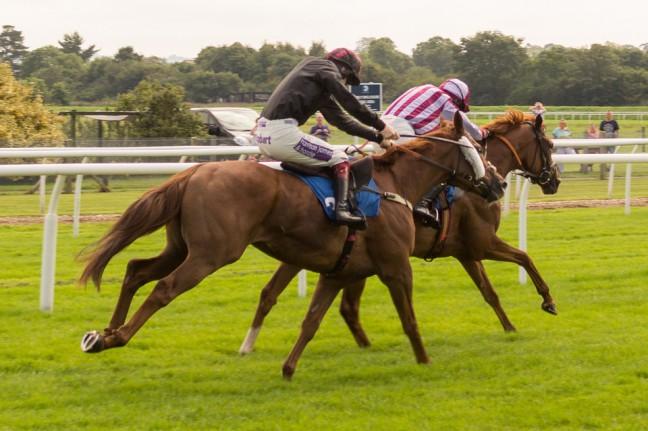Scientists from the School of Veterinary Medicine at the University of Wisconsin have created Equina, a computed tomography scanner for diagnostic imaging to help in the early detection of injuries in horses.
The Equina machine scans in a vertical direction. Unlike a traditional CT, where the patient lies on a table and moves through the gantry, the gantry of Equina moves over the patient. The gantry is a ring-shaped portion of a CT scanner that houses the x-ray tube and other components.
Clinical associate professor of large animal surgery at the UW SVM, Samantha Morello, said CT has better sensitivity and specificity for orthopedic regions compared to radiography, which helps produce more details.
“More knowledge in a shorter period of time is one key element,” Morello said. “The second key element is that compared to other ways of performing CT, we can do it without using anesthesia.”
Assistant Dean of Clinical Affairs at SVM Kenneth Waller III said while using technology other than that in the Equina machine, horses have to be anesthetized. When they wake up, they often thrash around, which can be dangerous for the personnel who try to calm them down.
Equina also allows horses to remain in a normal standing position, which reduces risks to the animals.
“What the scanner does is basically painting a 360 degree radiograph,” Waller said. “I’m going to use the analogy of a loaf of bread. Picture a loaf of bread that you look at from the outside. It gives us the ability to pull out an individual slice and look at that slice from the inside.”
The Equina machine can also help detect fractures before they become catastrophic.
“We don’t even take x-rays of horses’ heads anymore — we only CT them now,” Morello said. “We realized very quickly that our ability to diagnose lesions of the teeth, of the sinuses, of the skull, of the vertebrae — which are just in the upper part of the neck — we were under-diagnosing or not accurately diagnosing those lesions. A machine like this has the promise to be able to detect pathology in bones that would be able to predict horses who are at higher risk of fracturing their legs during a race much better than x-rays ever would.”
Diagnosing potential fractures can help reduce the mortality rates of race horses, Morello said.
Equina has clinical significance not just for the horse-racing community but also for horses in rural areas.
“Most horses in Wisconsin are not race horses — they are mostly horses that are owned for riding and showing purposes,” Morello said. “For those owners, it provides a relatively low-level cost approach to a high-level diagnostic. It oftentimes gives an owner an answer to what the problem is. Sometimes the problem is fixable and sometimes it isn’t. But even if it’s not fixable, to know what the problem is and know what you’re dealing with and be able to make decisions from there is invaluable for the future of their animals.”
Waller said despite its many benefits, the Equina machine can be expensive for some institutions to install.The machine also does not allow for cross-sectional imaging in the chest or abdomen.
“The biggest challenge was trying to find something that could give us the same quality of images as a traditional CT scanner which you could have in a human hospital,” Waller said.
Orthopedic surgeon Peter Muir said the idea came from his interest in horses and the need to scan them with the animal standing.
Muir said before the machine was installed in SVM, horses would rarely get CT scans. But now, over a hundred horses have been scanned for investigation and diagnosis since the machine was made available in January 2019.
“There were people on the team who had nothing to do with horses before this, so the fact that these really talented medical physicians saw a problem in horses specifically and put so much time and passion in developing what would ultimately be an incredibly valuable tool, to have different groups from the university come together to create something that is internationally known, is inspiring to see,” Morello said.


